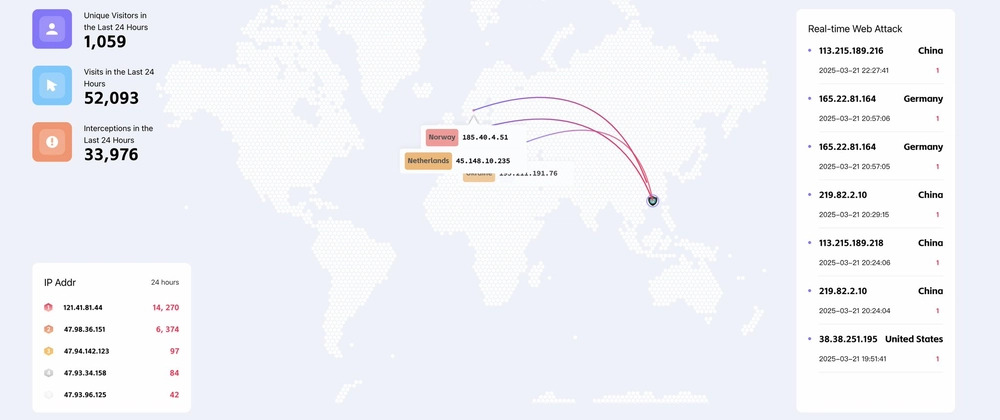SafeLine is a WAF powered by a semantic analysis engine, unlike traditional signature-based solutions. It's self-hosted and very easy to deploy & configure.
Github: https://github.com/chaitin/SafeLine
Website: https://safepoint.cloud/landing/safeline
Introduction
When selecting a Web Application Firewall (WAF), performance is a core concern for enterprises and developers. SafeLine WAF offers flexible configuration strategies, efficient resource management, and robust security capabilities, providing excellent performance support for businesses of all sizes.
This article analyzes SafeLine WAF’s performance and explains how to optimize resource allocation to enhance Queries Per Second (QPS) handling capacity.
Performance of Different SafeLine WAF Versions
SafeLine WAF provides multiple versions to meet diverse user needs. From small personal applications to medium and large businesses, SafeLine WAF’s architecture supports flexible scaling, ensuring the best balance between security and performance.
1. Personal Edition
Suitable for:
- Individual developers, small websites, and low-traffic applications
Performance Features:
- Operates in minimal resource mode, optimizing resource consumption for lightweight deployment.
- Designed for small applications with basic security needs.
Minimum System Requirements:
- CPU: 1 core
- Memory: 1GB
- Storage: At least 20GB (primarily for log storage)
Performance Metrics:
- Maximum Supported QPS: 800
- Scalability: Not supported; suitable for low-traffic scenarios.
2. Pro Edition
Suitable for:
- Medium to large websites, e-commerce platforms, financial services, and enterprise applications
Performance Features:
- Operates in maximum performance mode, utilizing full server resources to ensure high concurrency processing.
- Suitable for medium to high-traffic businesses with dynamic scaling capabilities.
Minimum System Requirements:
- CPU: 1 core
- Memory: 2GB
- Storage: 60GB (for logs and rule database)
- Disk IOPS (Input/Output Operations Per Second): 2000
Performance Metrics:
- Base QPS Handling Capacity: 800
- Scaling Strategy: For every additional 800 QPS, an extra 1 core CPU, 2GB RAM, and 40GB storage is recommended.
How to Expand SafeLine WAF Performance
For Pro users who need higher QPS support as business demand grows, performance can be expanded using the following methods:
1. Compute Resource Expansion
- For every additional 800 QPS, add 1 core CPU and 2GB RAM.
- Increasing compute resources enhances WAF’s data processing capability, reduces request blocking, and improves response speed.
2. Storage Expansion
- Logs, rule databases, and caching consume disk space. For every 800 QPS increment, 40GB additional storage is recommended.
- High-performance storage with 2000+ IOPS is recommended to ensure efficient log retrieval and rule matching.
Practical Application Scenarios
-
Small Blogs/Personal Websites:
- Use the Personal Edition, as it has low QPS requirements, minimal resource consumption, and is cost-effective.
-
Medium and Larger Enterprise Sites (e.g., SaaS platforms, e-commerce sites, Financial Services):
- Choose Pro Edition, which supports 800 QPS in its base configuration and can be expanded as the business grows.
Conclusion
SafeLine WAF offers flexible performance tuning capabilities to meet the needs of businesses of all sizes:
- Personal Edition supports up to 800 QPS, but does not support scaling.
- Pro Edition utilize higher computational resources, with each additional 800 QPS requiring 1 core CPU, 2GB RAM, and 40GB storage.
Users can plan their resource allocations accordingly to maintain the best balance between security and high performance.



Top comments (0)